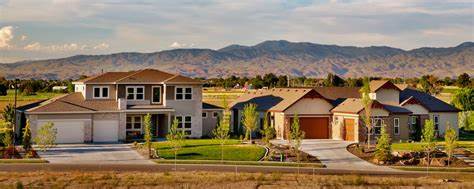
Recent Trends and What’s Next for the Boise Area Real Estate Market
By Sarah Clendenon • September 21, 2022Recent trends in the Boise real estate market have included rapid growth, high demand, skyrocketing home prices, thrilled sellers, and a lot of competition among potential buyers.
But in the last few weeks, that has all changed. What’s more, it could see further change today with a new decision by the Federal Reserve.
It’s no secret that the Boise area, as well as other areas of Idaho, has become a popular choice for relocation in recent years. Many people have migrated east from the coastal states of California, Oregon, and Washington. Some have headed up from southwest states like Arizona and Colorado. People have been attracted to the Gem State for a number of different reasons.
After the crash of 2008 and the lull until 2012, it has been a steady incline for the market. Prices in the Boise area started a more rapid ascent between 2018 to 2021. By summer of 2021 in the Treasure Valley, it was almost a name-your-price scenario for home sellers. Multiple offers immediately upon listing, offers rolling in from out of state – site unseen, escalation clauses to beat out the competition, all-cash offers above list price – in some cases up to $100,000 above.
Concerns about inflation sparked the Federal Reserve to raise the Federal Funds Rate in June. This rate lowers the available money supply and makes borrowing money more expensive. It doesn’t directly affect the mortgage rates, but mortgage lenders watch the Fed Rate very closely, and moves in it are often followed by similar moves in the mortgage rates. The late July meeting of the Federal Reserve produced another rate increase of .75%. Many in the real estate industry in the Treasure Valley became concerned about whether the rate moves would start to turn the market the opposite direction.
Those concerns were not only accurate, but the change in the Boise area market happened much more quickly than many expected. It started with the mountain properties in Boise County. Properties in Gem County and Owyhee County started sitting on the market longer. By the time 30 days had elapsed, the entire Treasure Valley was feeling the effects of a rapidly changing real estate market.
Lindy Riebe, Broker of North End Real Estate in Boise, has noticed the shift and is worried for the future.
“My business has changed completely in the last few weeks. I had multiple Buyer clients desperately searching for housing, and then all the sudden there were new listings popping up everywhere with no Buyers even visiting them!
Builders who could not keep up with demand have now stopped building. Things have really taken a turn. With the number of people who bought at the height of the market, coupled with the high inflation, I am concerned we will see a lot of foreclosures in the next 4 to 5 months.”
Home listings that may have seen multiple offers on listing day one are now sitting for seven days. Some linger for a couple of weeks. By September 1 and in the last three weeks it is common to see several houses sitting for sale with very few if any showings, and no offers coming in. Price drops, seller concessions, open houses filled with food and fanfare, buyers hesitating, and closing cost discussions not seen in years have become the norm again, nearly overnight.
According to Norada Real Estate Investments
“The housing boom in Idaho’s capital has slowed. The bidding wars are the exception and not the rule, and buyers aren’t having to make split-second decisions and waive contingencies for their offer to even be considered. Buyers are resisting record prices and 13-year-high mortgage rates. 61% of listings in the Boise metro region had a price decrease in June, according to Redfin. Builders who couldn’t meet demand last year are slowing down.”
Typically, Federal Reserve rate changes do not have such a rapid and drastic impact on the market. Waning consumer confidence, food prices, gas prices, and the world political climate have likely shifted both the ability and the willingness of homebuyers to get approved for mortgage loans. In the case of many buyers, they want to use the wait-and-see strategy to watch what the market may do next.
In looking at the trend over time of Federal Fund Rates, the number being at 2.5% now is quite low compared to the fluctuation and some of the highest rates over the last 60 years. This chart shows that in January 1981 the rate was an astonishing 19.08%. Many who were homebuyers in the early 1980s recall the amazingly high mortgage rates that correlated with this high Fed Fund Rate.
Today was the most recent meeting of the Federal Reserve. As expected, the Fed Fund Rate was increased another .75%. This is the third time the rate has been increased since June, and brings about the highest rate since 2008.
This rate hike is an attempt to relieve the current inflation situation in the US. This and other factors have already contributed to a dramatic change in the Boise area real estate market. The market typically cools as Idaho’s weather cools in the winter. The decision made by the Federal Reserve today could intensify the rapid shift from a strong seller’s market to even more of a buyer’s market, one that we have not seen in a decade.
Photo courtesy of Boise Hunter Homes
Note: Idaho Dispatch Reporter Sarah Anne is a licensed Real Estate Agent in Idaho.
Tags: Boise, Buying, Federal Reserve, Finance, Growth, Housing, Real Estate, Selling, Treasure Valley
2 thoughts on “Recent Trends and What’s Next for the Boise Area Real Estate Market”
Comments are closed.








In one of the many overpriced developments near where I live, there are currently six homes for sale. One was pulled off the market by the owner and another was just listed. They have been sitting for over two months now with no activity.
I bonds are paying over 9%. Ten grand max investment. A good place to stanch some cash.